Spring often feels like a season of promise—buds opening, soil warming, and color returning to the garden. But just when you think the danger of winter has passed, a surprise late snowstorm can strike. These unexpected cold snaps are notorious for damaging tender new growth, young transplants, and blooming flowers. Fortunately, with a little preparation and quick action, you can protect your garden from spring snow and minimize lasting damage.
Here’s everything you need to know about why late snow is dangerous, how to shield your plants effectively, and what to do after the storm passes to help your garden recover.
Why Late Spring Snow Can Be So Damaging
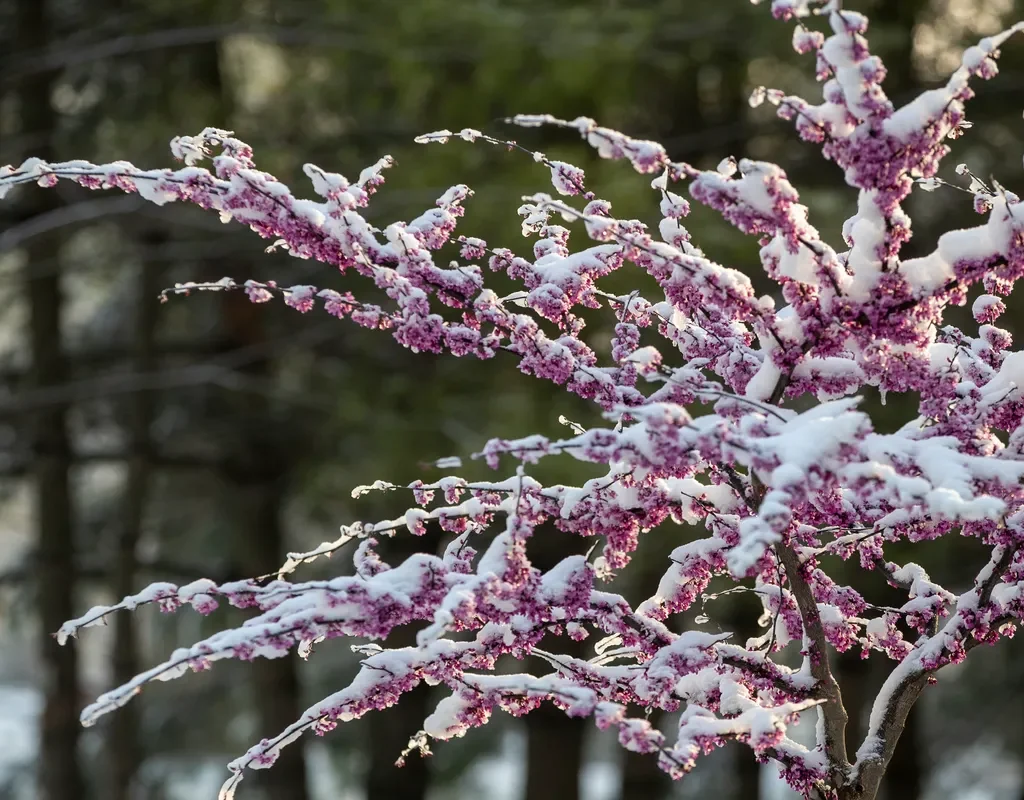
A light dusting of snow isn’t always a disaster—in fact, it can act as an insulating blanket. The real threat comes when heavy, wet snow combines with freezing temperatures and wind.
Here’s why spring snow is risky for plants:
- Tender growth is vulnerable. After weeks of warmth, plants often push out new shoots, blossoms, and leaves that haven’t hardened against frost.
- Temperature fluctuations cause stress. Rapid swings from warm to freezing can shock plant cells and slow growth.
- Snow load breaks branches. Wet, heavy snow can snap delicate limbs, especially on shrubs and fruit trees.
- Soil compaction and root damage. Melting snow can oversaturate the ground, suffocating roots or promoting rot.
- Delayed growth or death. Even if plants survive, damaged tissues and frostbitten buds can reduce yields and blooms for the season.
To protect your garden, you need both preventive strategies and emergency responses.
Step 1: Watch the Weather and Prepare Early
Late frosts and snowfalls are most common when warm air has lured plants out of dormancy but winter still lingers. Keep a close eye on extended forecasts in April and May—especially if you live in regions prone to erratic spring weather.
When a cold snap is predicted:
- Prepare protective covers in advance.
- Water the garden thoroughly before the freeze (moist soil retains heat better).
- Move containers and potted plants to sheltered spots.
Having a plan in place means you can act quickly when snow is on the way.
Step 2: Cover Plants Before the Snow Hits
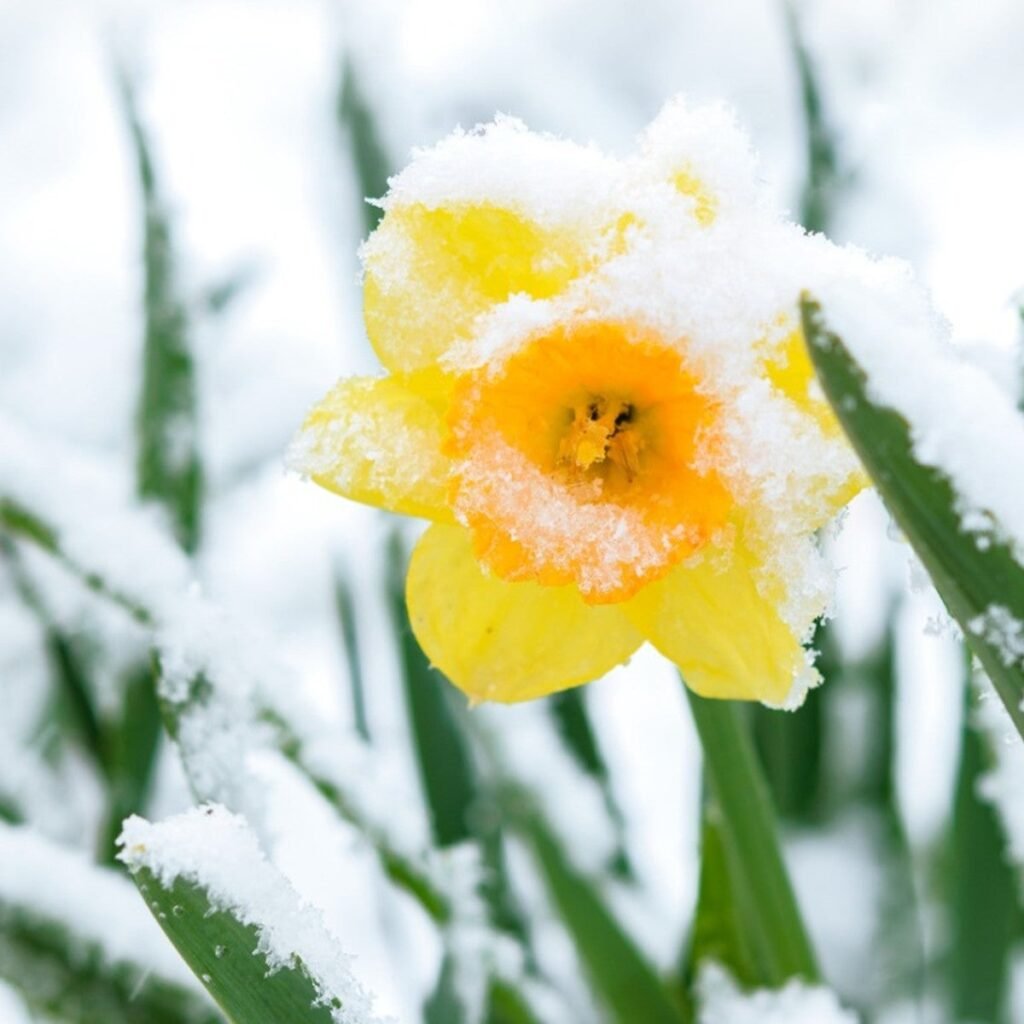
The most effective way to protect tender growth is by covering plants to trap heat and keep snow from direct contact with foliage. Different plants require different approaches, but the goal is always insulation without suffocation.
Use Frost Cloths or Garden Blankets
- Lightweight frost fabrics, row covers, or garden blankets are designed to let air and light in while shielding plants from cold.
- Secure the edges to the ground with rocks or garden staples to keep out wind.
- Avoid plastic touching the plants—it transfers cold directly to leaves and can cause freeze burn.
Household Alternatives
If you don’t have frost cloths, you can improvise using:
- Old bedsheets or towels
- Cardboard boxes for smaller shrubs or seedlings
- Plastic buckets or flower pots (remove them during the day so plants don’t overheat)
Pro Tip: Always remove covers once temperatures rise above freezing to allow air circulation and prevent mold or overheating.
Step 3: Mulch Heavily Around the Base
Mulch is one of the simplest and most powerful defenses against temperature swings.
Apply 2–4 inches of straw, shredded leaves, or wood chips around the base of plants to insulate the soil and root zone. This helps retain ground warmth and prevents the freezing and thawing cycle that can push roots upward.
For delicate perennials or early vegetable seedlings, you can even mound mulch lightly over the lower stems during a snow event—just be sure to remove the excess once the weather stabilizes.
Bonus: Mulch also helps absorb the moisture from melting snow, preventing waterlogging.
Step 4: Protect Trees and Shrubs From Snow Load
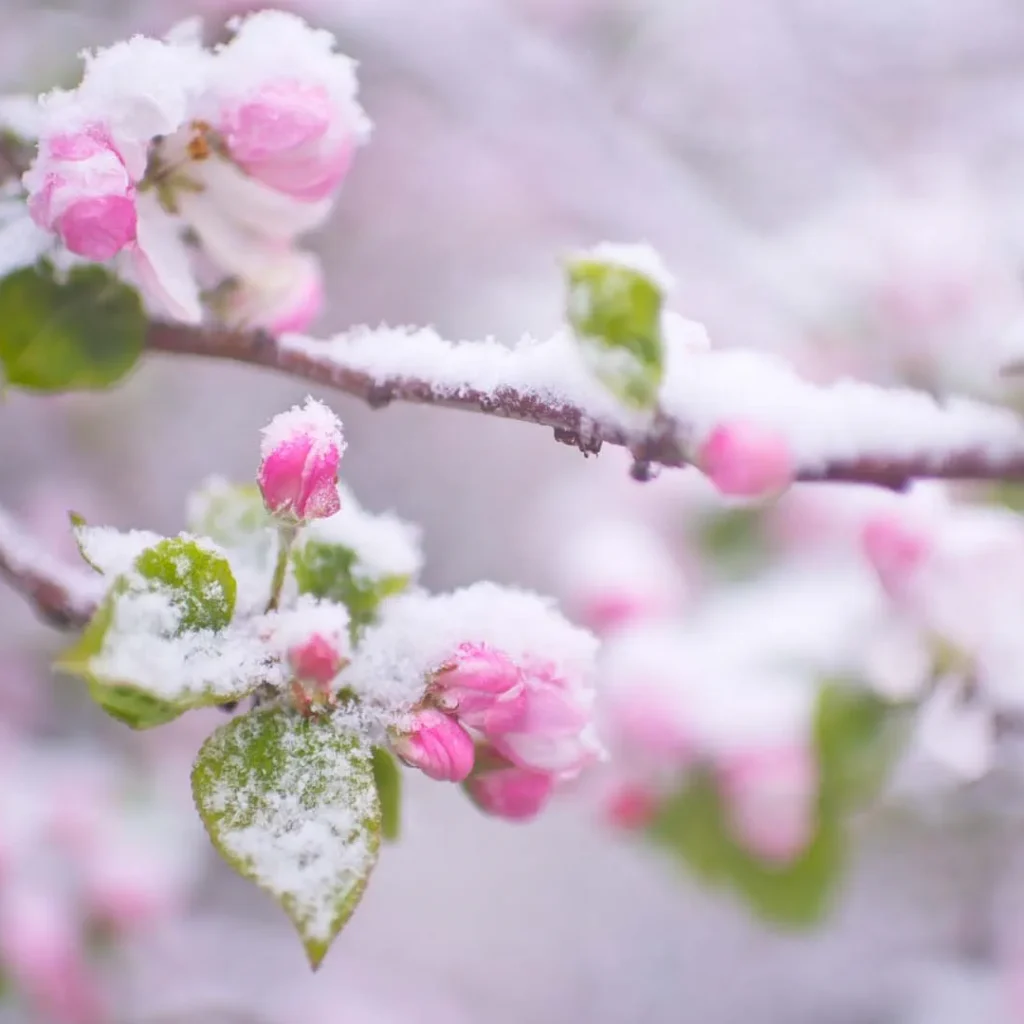
Late spring snow is often wet and heavy—perfect for breaking branches weighted down by leaves or blossoms. You can prevent breakage with a few quick measures.
Before the Snow:
- Gently tie branches together using soft twine or garden tape to reduce strain.
- For small fruit trees or shrubs, wrap with burlap or breathable fabric to hold branches upright.
- Stake young trees to help them withstand wind and weight.
During or After the Snow:
- If snow starts to pile up, gently brush it off using a broom or soft rake, starting from the top down.
- Never shake branches aggressively—frozen limbs can snap easily.
Pro Tip: Don’t remove ice from branches until temperatures rise above freezing; you’ll do more harm than good.
Step 5: Move and Protect Container Plants
Container-grown plants are especially vulnerable because their roots are more exposed to cold air.
- Move pots to sheltered areas—like a garage, porch, or greenhouse—before the snow starts.
- If you can’t move them, wrap pots in old blankets, burlap, or bubble wrap to insulate the roots.
- Group containers together and cover them collectively with a frost blanket for extra warmth.
After the storm, allow them to thaw gradually—rapid temperature changes can stress root systems.
Step 6: Use Cloches and Cold Frames for Early Crops
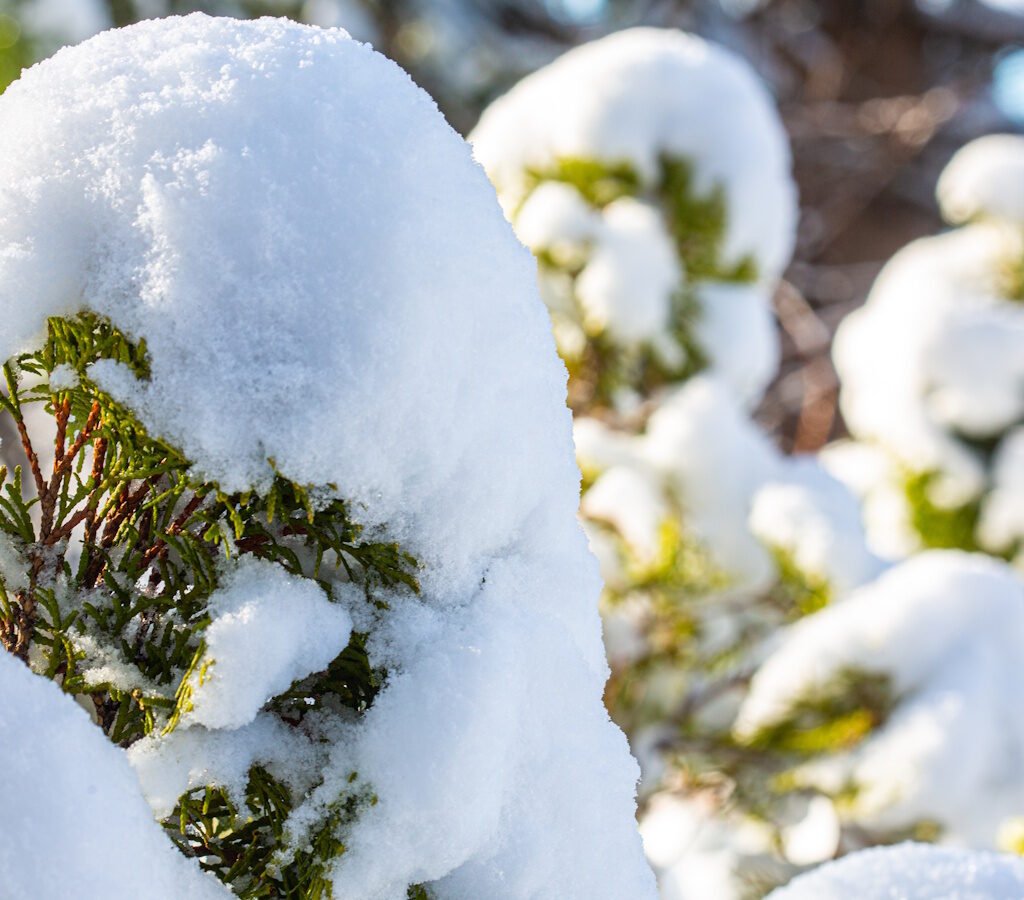
If you’ve already planted early vegetables—like lettuce, peas, or spinach—you can protect them using mini greenhouses.
Cloches:
Individual covers made from glass, plastic, or even cut-off milk jugs can be placed over young plants. They trap heat and prevent snow contact.
Cold Frames:
Small, box-like structures with transparent tops, cold frames are perfect for shielding seedlings and extending your growing season.
- Keep the lid closed during snow or freezing nights.
- Open it during sunny days to prevent overheating.
These protective tools are reusable, easy to maintain, and can make the difference between losing your early crops or enjoying a thriving spring harvest.
Step 7: After the Snow—Help Your Plants Recover
Once the storm passes and temperatures rise, it’s time to assess and revive your garden.
1. Remove Covers Gradually
Lift frost cloths or blankets in the morning once temperatures reach above 40°F (4°C). Sudden exposure to bright sunlight can shock delicate growth, so uncover plants slowly.
2. Check for Damage
Inspect for broken branches, frostburned leaves, or bent stems. Prune only damaged tissue once it’s clear the plant is actively regrowing. Avoid cutting too early—you might accidentally remove living parts that can still recover.
3. Water Wisely
Melting snow may have already saturated the soil, so check moisture before watering. When the ground dries, give plants a gentle drink to rehydrate their roots and encourage recovery.
4. Feed Lightly
A diluted liquid fertilizer or compost tea can help stressed plants bounce back, but don’t overfertilize immediately—it can worsen shock. Wait a week or two before applying heavier feeding.
5. Watch for Delayed Symptoms
Frost damage sometimes appears days later. Wilted leaves, blackened edges, or slowed growth are signs of stress, but many plants can recover fully with patience and consistent care.
Step 8: Choose Cold-Tolerant Plants for the Future

One of the best long-term strategies is prevention—by selecting plants that can handle the occasional spring chill.
Cold-hardy flowers and crops include:
- Pansies, violas, and snapdragons (can survive light snow)
- Kale, spinach, peas, and broccoli (tolerate frost)
- Daffodils and tulips (already adapted to cold seasons)
If your region frequently experiences unpredictable springs, it’s wise to delay planting tender crops—like tomatoes or cucumbers—until nighttime temperatures consistently stay above 50°F (10°C).
Extra Protection Tricks from Seasoned Gardeners
- Use water-filled jugs or barrels near plants: They absorb heat during the day and release it slowly overnight, keeping the air slightly warmer.
- Create windbreaks using hay bales or temporary screens to reduce cold air exposure.
- Use raised beds: They drain better, warm up faster, and prevent roots from sitting in icy water.
- Keep backup seeds or transplants: If a few plants don’t survive, you can quickly replant without losing your season.
Final Thoughts
Late spring snow may be frustrating, but it doesn’t have to spell disaster for your garden. With preparation and swift action, you can shield tender growth, preserve blooms, and help your plants recover quickly once the weather stabilizes.
Think of these surprise storms as nature’s test of your gardening resilience. The key is to stay alert, stay flexible, and protect your plants before the snow arrives. When you pull back those covers and see your flowers and vegetables standing strong after a storm, you’ll be reminded that even in unpredictable weather, a little care and planning can make your garden thrive—no matter what spring throws your way.
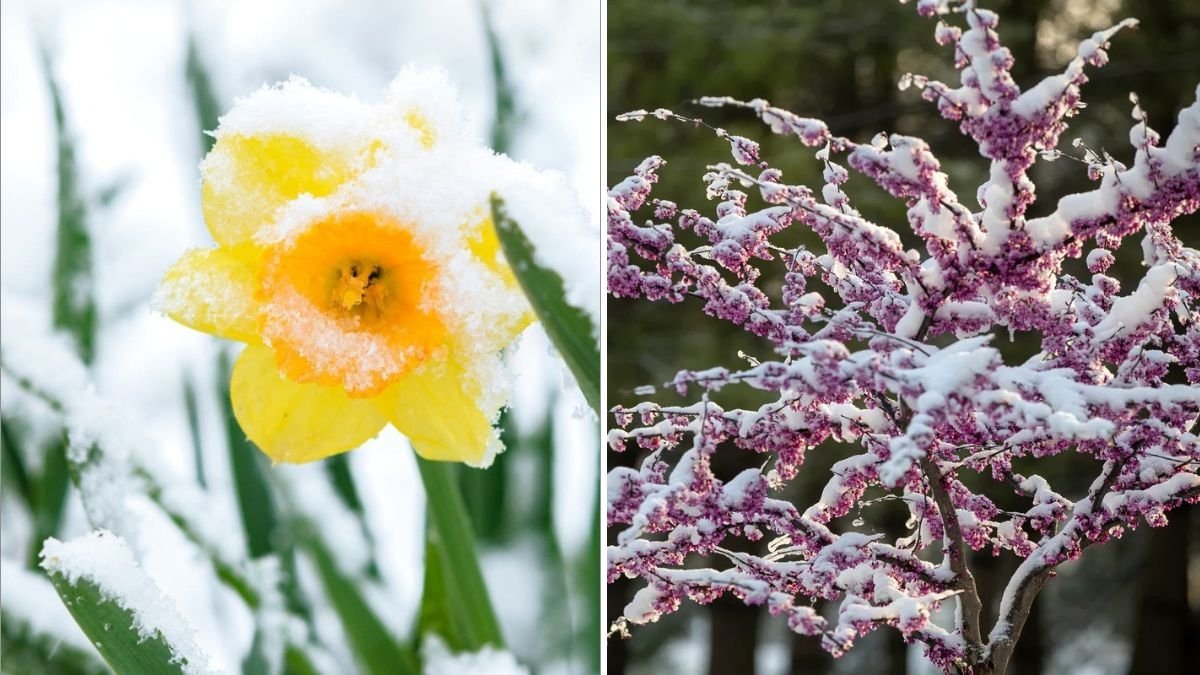
Leave A Comment